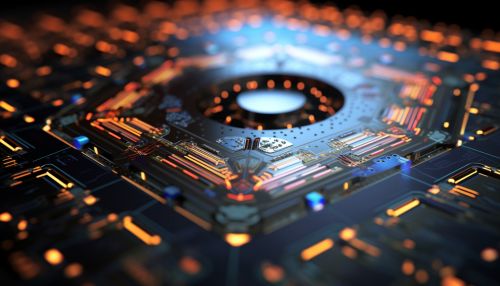The Physics of Quantum Computing with Topological Qubits
Introduction
Quantum computing is a rapidly evolving field that leverages the principles of quantum mechanics to perform computational tasks. One of the most promising approaches to quantum computing utilizes topological qubits, a type of quantum bit that is robust against many types of errors due to its topological nature. This article will delve into the physics of quantum computing with topological qubits, providing a comprehensive and detailed exploration of this fascinating subject.


Quantum Computing
Quantum computing is a type of computation that harnesses the unique properties of quantum bits, or qubits, to perform calculations. Unlike classical bits, which can be either a 0 or a 1, qubits can exist in a superposition of states, allowing them to represent both 0 and 1 simultaneously. This property, along with entanglement and interference, allows quantum computers to perform complex calculations much more efficiently than classical computers.
Topological Qubits
Topological qubits are a type of qubit that leverages the properties of topology, a branch of mathematics that deals with properties that are preserved under continuous deformations. Topological qubits are particularly promising for quantum computing because they are inherently resistant to many types of errors. This is due to the fact that the information stored in a topological qubit is not localized to a specific location, but rather is stored in the overall topology of the system. This makes topological qubits robust against local errors, a significant advantage in quantum computing where error correction is a major challenge.
Physics of Topological Qubits
The physics of topological qubits is rooted in the principles of quantum mechanics and topology. In a topological quantum computer, information is stored in the braiding patterns of anyons, quasi-particles that exist only in two dimensions. These anyons have the unique property that their quantum state is determined by their topological relationships with other anyons, rather than their individual properties. This means that the information stored in a topological qubit is robust against local perturbations, making topological qubits an attractive option for quantum computing.
Anyons and Braiding
The key to understanding topological qubits lies in the concept of anyons and braiding. Anyons are a type of quasi-particle that exist only in two dimensions and have the unique property that their quantum state is determined by their topological relationships with other anyons. This means that the information stored in a topological qubit is not localized to a specific location, but rather is stored in the overall topology of the system.
Braiding refers to the process of moving anyons around each other in a two-dimensional space. The quantum state of a system of anyons is determined by the history of these braiding operations, and this history is topologically protected. This means that small perturbations or errors will not change the overall braiding pattern, and thus will not affect the quantum state of the system. This property makes topological qubits highly robust against errors, a significant advantage in quantum computing.
Quantum Error Correction with Topological Qubits
One of the major challenges in quantum computing is dealing with errors. Quantum systems are extremely sensitive to environmental disturbances, and even small errors can quickly derail a quantum computation. However, topological qubits offer a promising solution to this problem.
In a topological quantum computer, errors that affect the individual anyons will not change the overall braiding pattern, and thus will not affect the quantum state of the system. This means that topological qubits are inherently resistant to many types of errors. This property, known as topological protection, is one of the key advantages of topological qubits.
Future of Quantum Computing with Topological Qubits
The use of topological qubits in quantum computing is still a relatively new field, but it holds great promise. The inherent error resistance of topological qubits could potentially allow for the creation of more robust and reliable quantum computers. However, there are still many challenges to overcome, including the practical implementation of topological qubits and the development of efficient algorithms for topological quantum computing.
Despite these challenges, the future of quantum computing with topological qubits looks bright. As our understanding of quantum mechanics and topology continues to grow, so too will our ability to harness these principles for quantum computing.
